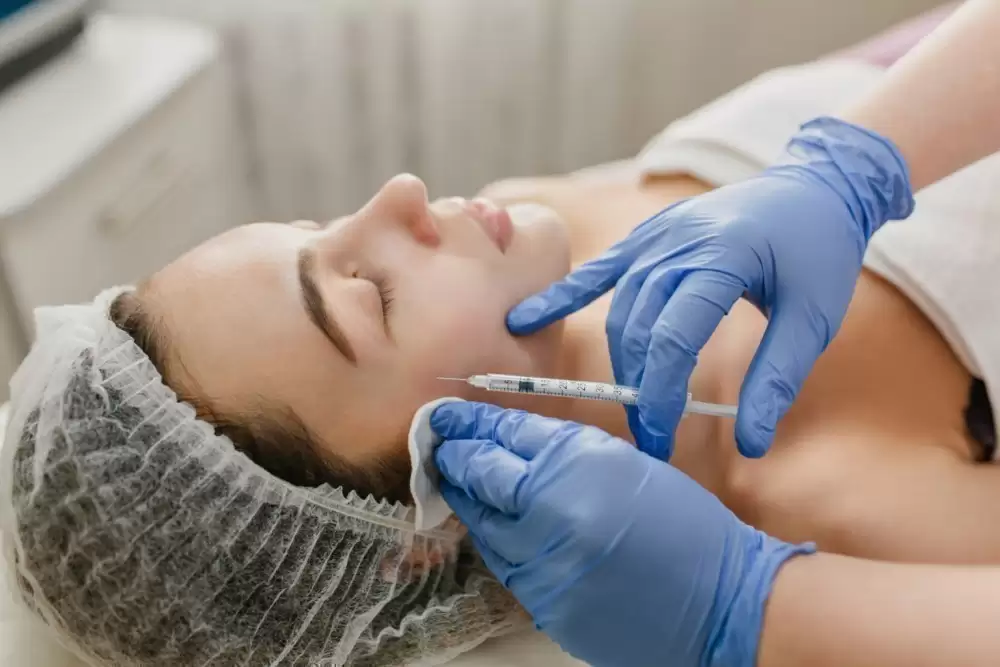What are the symptoms of sebaceous filaments?
Sebaceous filaments are small, naturally occurring structures in the skin that are often mistaken for blackheads. They are a normal part of the skin’s oil-secreting system and typically appear on areas with a high concentration of sebaceous glands, such as the nose, forehead, and chin. Here are the common symptoms and characteristics of sebaceous filaments:
- Tiny, Pinpoint-Like Structures: Sebaceous filaments appear as small, thin, and light-colored dots or lines on the skin’s surface. They are usually more visible in areas with larger pores.
- Grayish or Flesh-Toned Color: They may have a grayish, beige, or flesh-toned color and are not as dark as blackheads.
- Not Raised or Inflamed: Unlike blackheads or acne, sebaceous filaments are not raised or inflamed. They are typically flat against the skin and do not cause redness or swelling.
- Visible in Pores: They are most commonly found in the pores of the nose, forehead, and chin. When the skin’s oil combines with dead skin cells, it can make these filaments more noticeable.
- No Pain or Discomfort: Sebaceous filaments do not cause pain or discomfort. They are usually asymptomatic and are more of a cosmetic concern.
- Increased Visibility with Oil Production: When the skin produces excess oil, sebaceous filaments can become more noticeable. They can appear more prominent if the skin is oily or if there is a buildup of sebum in the pores.
Sebaceous filaments are a normal part of the skin’s function and not a sign of a skin condition. They are different from blackheads or whiteheads, which are comedones that can be caused by clogged pores. Regular cleansing and exfoliation can help minimize their appearance, but they are typically harmless and do not require medical treatment.
What are the causes of sebaceous filaments?
Sebaceous filaments are natural and common features of the skin, primarily caused by the normal functioning of the sebaceous glands. The main causes of sebaceous filaments include:
- Sebum Production: Sebaceous filaments are formed when sebum (oil) produced by the sebaceous glands combines with dead skin cells and other debris in the pores. This mixture can become visible as small, thin structures on the skin’s surface.
- Skin Type: Individuals with oily skin or combination skin are more likely to have prominent sebaceous filaments. This is because their sebaceous glands produce more oil, which can become more noticeable in the pores.
- Enlarged Pores: Larger pores can make sebaceous filaments more visible. The filaments are more apparent in areas with larger pores, such as the nose, forehead, and chin.
- Genetics: Genetic factors can influence sebum production and pore size, making some individuals more prone to noticeable sebaceous filaments.
- Hormonal Changes: Hormonal fluctuations, such as those experienced during puberty, menstruation, or pregnancy, can increase sebum production, which may lead to more visible sebaceous filaments.
- Skin Care Products: Using heavy or comedogenic skin care products can contribute to the buildup of sebum and dead skin cells in the pores, making sebaceous filaments more prominent.
- Environmental Factors: Exposure to environmental factors such as humidity, pollution, or excessive sun can affect the skin’s oil production and contribute to the visibility of sebaceous filaments.
Sebaceous filaments are a normal part of skin physiology and are not a sign of a skin problem. They serve to help move sebum to the surface of the skin. Proper skin care, including regular cleansing and exfoliation, can help manage their appearance but is not typically necessary for health reasons.
What is the treatment for sebaceous filaments?
Treatment for sebaceous filaments focuses on managing their appearance rather than eliminating them entirely, as they are a normal part of skin physiology. Here are some common methods for reducing their visibility:
1. Regular Cleansing: Use a gentle cleanser to remove excess oil and impurities from the skin. Cleansing helps prevent the buildup of sebum and dead skin cells in the pores, which can make sebaceous filaments more noticeable.
2. Exfoliation: Regular exfoliation can help remove dead skin cells and prevent them from accumulating in the pores. Exfoliating products with salicylic acid or alpha hydroxy acids (AHAs) can be effective. However, avoid over-exfoliating, as this can irritate the skin.
3. Retinoids: Topical retinoids, such as retinol or prescription-strength retinoids, can help regulate sebum production and promote cell turnover. This can reduce the appearance of sebaceous filaments by keeping the pores clear.
4. Clay Masks: Clay masks can absorb excess oil and help reduce the appearance of sebaceous filaments. They can be used once or twice a week to help manage oil production and keep the pores clean.
5. Oil-Control Products: Using oil-free or mattifying skincare products can help manage excess oil production and reduce the prominence of sebaceous filaments.
6. Professional Treatments: For more significant concerns, consider professional treatments such as chemical peels, microdermabrasion, or laser therapy. These treatments can help improve skin texture and reduce the visibility of sebaceous filaments.
7. Avoiding Comedogenic Products: Use non-comedogenic (non-pore-clogging) skincare and makeup products to prevent further buildup in the pores.
Sebaceous filaments are a normal and benign part of skin function, and while they cannot be completely eliminated, these methods can help minimize their appearance and maintain overall skin health.

Leave a Reply
You must be logged in to post a comment.